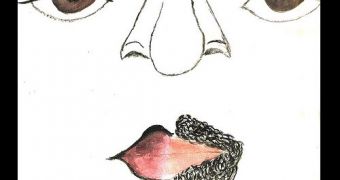A team of neuroscientists at MIT and Harvard found that the same face can look male or female to a person, depending on where it appears in his/her field of view.
If we are surrounded by people, we can tell usually who is a man and who is a woman, by looking at their clothes, or at their hair.
This actually proves that our brain's judgment is never based only on the face of a person, and the experiment the team carried out, supports this theory.
They showed computer-generated faces to people, with no other gender-identifying characteristics, and concluded that individuals develop a pattern of biases, based on where the image of the face appears.
The subjects saw a random series of faces, from a very masculine to a very feminine spectrum, and they were asked to classify the faces by gender.
The more androgynous faces, were repeatedly rated as male or female, depending on where they appeared.
The subjects had to fix the center of a screen, as faces flashed elsewhere on the screen for 50 milliseconds each.
If we consider that the subjects sat nearly 22 inches from the monitor, it means that the faces looked about three-quarters of an inch tall.
The bias for male or female faces depended on the individuals, meaning that people classified androgynous faces as female, every time they appeared in the upper right corner, while others classified faces in that same location as being male.
These findings contradict the widely accepted dogma, according to which the way that the brain sees an object should not depend on where the object is located relative to the observer, Arash Afraz, a postdoctoral associate at MIT’s McGovern Institute for Brain Research and lead author of a new paper on the work, said.
“It’s the kind of thing you would not predict — that you would look at two identical faces and think they look different,” he added.
Afraz explains what happens in the brain by saying that in the visual cortex – the part of the brain that processes images, cells are grouped by which part of the visual scene they analyze.
In each of these two groups, there could be a small number of neurons devoted to interpreting gender of faces.
The author says that the smaller the image, the fewer cells are activated, so cells that respond to female faces may dominate.
In a different part of the visual cortex, the dominant cells could be those that respond to male faces.
“It’s all a matter of undersampling,” Afraz explained.
He and two colleagues from Harvard, Patrick Cavanagh and Maryam Vaziri Pashkam, described their findings in the journal Current Biology.

 14 DAY TRIAL //
14 DAY TRIAL //